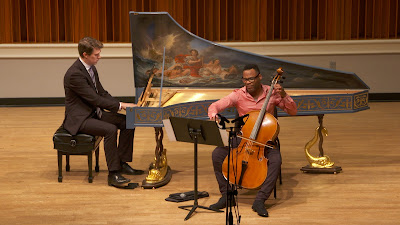A master of funk drumming comes to town with two adepts on alto sax and organ

Mike Clark, Donald Harrison and Kendall Carter at the JK. Mike Clark perfected a style of drumming that went hand-in-glove with the new idiom Herbie Hancock was exploring in the 1970s. It drew upon demotic black music without succumbing to "fusion" inanities. Now on the threshold of three-quarters of a century on the planet, Clark has maintained eminence in his field, and has drawn extra attention hereabouts in recent recorded work with local tenor-sax maestro Rob Dixon. His decades of experience include holding down the percussion chair in organ trios. That's the kind of group Clark brought to the Jazz Kitchen Sunday night with alto saxophonist Donald Harrison and organist Kendall Keyz Carter. Clark's style has been called "linear funk," a term he's somewhat uneasy about, though he acknowledges it contains an accurate description of how he blends elements of the idiom over the drum set's different instruments rather than emphasizing the distinct




